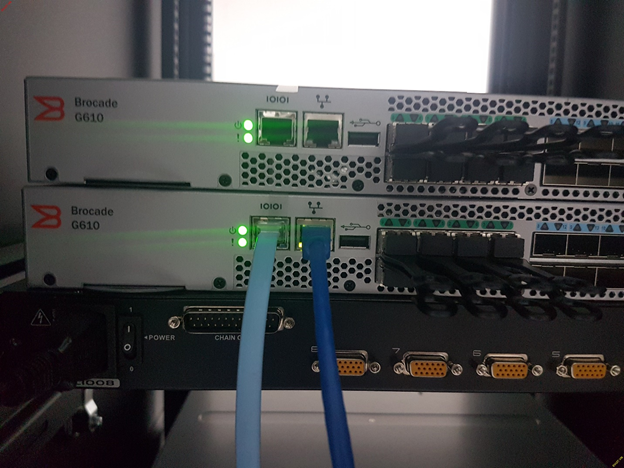

NL_Port: This is a node port that is loop capable. It is used to connect an equipment port to the fabric. N_Port: This is a node port that is not loop capable. VEX_Port – A virtual E_Port that terminates at the switch and does not propagate fabric services or routing topology information from one edge fabric to the other, when an FCIP connection is involved Target Device (Device ports) VE_Port – A virtual E_Port that terminates at the switch and does not propagate fabric services or routing topology information from one edge fabric to the otherĮX_Port – An E_Port from a router to an edge fabric the router terminates EX_Ports preventing fabric merges

A port is defined as an U_Port when it is not connected or has not yet assumed a specific function in the fabric. It can operate as either an E_Port, F_Port, or FL_Port. A more generic switch port than a G_Port. L_Port: This is a loop capable node or switch port. A port is defined as a G_Port after it is connected but has not received response to loop initialization or has not yet completed the link initialization procedure with the adjacent Fiber Channel device. G_Port: This is a generic port that can operate as either an E_Port or an F_Port. It is used to connect NL_Ports to the switch in a public loop configuration (in switched fabric env.). It is used to connect an N_Port point-to-point to a switch.įL_Port: This is a fabric port that is loop capable. A port is designated an E_Port when it is used as an inter switch expansion port (ISL) to connect to the E_Port of another switch, to enlarge the switch fabric.į_Port: This is a fabric port that is not loop capable. Port Types and DefinitionsĮ_Port: This is an expansion port. We can also login to the SAN switch GUI console using web browser, open web browser and type the IP address / SAN Switch Name in the address bar
#Brocade san switch basics software
Putty: A free telnet and SSH terminal software for Windows and Unix platforms that enables users to remotely access computers over the Internet.īy typing the Switch IP Address in putty configuration we will login to SAN Switch (CLI). Without a connection to the console port, a technician would have to visit the site to perform repairs or initialization. This allows a technician sitting in a Network Operations Center thousands of miles away the ability to restore a switch or perform an initialization configuration securely over a standard telephone line even if the primary network is in failure. This creates a secondary path to the switch outside the bandwidth of the network which needs to be secured without relying on the primary network. By connecting to the console port you can get remote access to the root level of a switch without using the network that the switch is connected to. A complete remote management system allows remote reboot, shut-down, powering on hardware sensor monitoring (fan speed, power voltages, chassis intrusion, etc.) Out band Management ports is also called as Ethernet Management port (RJ45).Ĭonsole:Switch console ports are meant to allow root access to the switch via a dumb terminal interface, regardless of the state of the switch (unless it is completely dead). It also can be used to ensure management connectivity (including the ability to determine the status of any network component) independent of the status of other in-band network components.

This allows the network operator to establish trust boundaries in accessing the management function to apply it to network resources. Fiber optics has several advantages over traditional metal communications lines: Fiber optic cables have a much greater bandwidth than metal cables.Įthernet Port: out-of-band management involves the use of a dedicated channel for managing network devices. Fiber cable:A fiber optic cable consists of a bundle of glass threads, each of which is capable of transmitting messages modulated onto light waves.


 0 kommentar(er)
0 kommentar(er)
